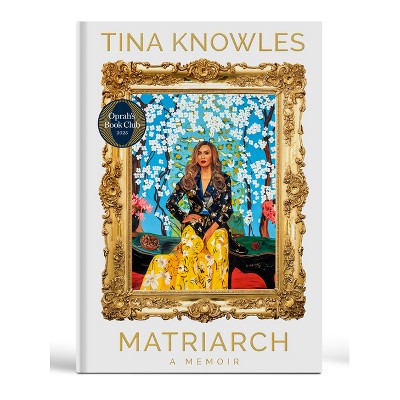$40.00 when purchased online
Target Online store #3991
About this item
Highlights
- Colonized through Art explores how the federal government used art education for American Indian children as an instrument for the "colonization of consciousness," hoping to instill the values and ideals of Western society while simultaneously maintaining a political, social, economic, and racial hierarchy.
- About the Author: Marinella Lentis is an independent researcher specializing in historical Native arts and education.
- 450 Pages
- History, Native American
Description
About the Book
An examination of the use of art education in government-controlled schools as an instrument for assimilating American Indian children at the turn of the twentieth century.Book Synopsis
Colonized through Art explores how the federal government used art education for American Indian children as an instrument for the "colonization of consciousness," hoping to instill the values and ideals of Western society while simultaneously maintaining a political, social, economic, and racial hierarchy. Focusing on the Albuquerque Indian School in New Mexico, the Sherman Institute in Riverside, California, and the world's fairs and local community exhibitions, Marinella Lentis examines how the U.S. government's solution to the "Indian problem" at the end of the nineteenth century emphasized education and assimilation. Educational theories at the time viewed art as the foundation of morality and as a way to promote virtues and personal improvement. These theories made art a natural tool for policy makers and educators to use in achieving their assimilationist goals of turning student "savages" into civilized men and women. Despite such educational regimes for students, however, Indigenous ideas about art often emerged "from below," particularly from well-known art teachers such as Arizona Swayney and Angel DeCora. Colonized through Art explores how American Indian schools taught children to abandon their cultural heritage and produce artificially "Native" crafts that were exhibited at local and international fairs. The purchase of these crafts by the general public turned students' work into commodities and schools into factories.Review Quotes
"I highly recommend the volume and believe it to be essential reading for those studying the Native American boarding school system in the United States."--Mackenzie J. Cory, Journal of the History of Childhood and Youth
"Colonized through Art provides a thorough historical account of how white, Euro-American superintendents, curriculum writers, and teachers implemented cultural assimilation, which was manifested in public displays through nineteenth- and early twentieth-century boarding schools."--Kevin Slivka, History of Education Quarterly
"In Colonized through Art: American Indian Schools and Art Education, 1889-1915, Marinella Lentis provides an extensively researched study of art education in U.S. government operated boarding schools for American Indian students at the end of the 19th and beginning of the 20th centuries."--John Reyhner, Pacific Northwest Quarterly
"Lentis breaks new ground in explaining the presence of arts and crafts . . . in government schools that otherwise 'suppressed every aspect of Indian cultures, traditions, and languages.'. . . Well worth the read."--Lisa K. Neuman, American Historical Review
"Marinella Lentis deftly lays out the terrain of Indian school art programs. . . . A significant contribution to the field, Colonized through Art clearly, succinctly, and broadly expands our knowledge of the ways government officials pushed assimilation through art--not to mention the resistance many Native students creatively expressed."--Linda M. Waggoner, author of Fire Light: The Life of Angel De Cora, Winnebago Artist-- (9/10/2016 12:00:00 AM)
"Readers who are interested in the residential schools, art education, the Arts and Crafts Movement, or the implementation of federal Indian policy at the onset of the twentieth century will find Colonized through Art an original and engrossing addition to the existing literature in these areas. Lentis greatly expands our understanding of how the residential schools promoted assimilation through art and of the ways that Native students used their art for creative expressions of resistance."--Melissa D. Parkhurst, Western Historical Quarterly
"Studies of federal Indian schooling have spawned a variety of approaches to the contested subject, but in Colonized through Art the independent scholar Marinella Lentis has moved the discussion in a new direction by evaluating the impact of art education in these schools."--Margaret Connell-Szasz, Journal of American History-- (9/1/2018 12:00:00 AM)
About the Author
Marinella Lentis is an independent researcher specializing in historical Native arts and education.Dimensions (Overall): 9.0 Inches (H) x 6.0 Inches (W) x 1.0 Inches (D)
Weight: 1.44 Pounds
Suggested Age: 22 Years and Up
Sub-Genre: Native American
Genre: History
Number of Pages: 450
Publisher: University of Nebraska Press
Format: Paperback
Author: Marinella Lentis
Language: English
Street Date: September 1, 2021
TCIN: 89084132
UPC: 9781496228215
Item Number (DPCI): 247-18-9232
Origin: Made in the USA or Imported
If the item details above aren’t accurate or complete, we want to know about it.
Shipping details
Estimated ship dimensions: 1 inches length x 6 inches width x 9 inches height
Estimated ship weight: 1.44 pounds
We regret that this item cannot be shipped to PO Boxes.
This item cannot be shipped to the following locations: American Samoa (see also separate entry under AS), Guam (see also separate entry under GU), Northern Mariana Islands, Puerto Rico (see also separate entry under PR), United States Minor Outlying Islands, Virgin Islands, U.S., APO/FPO
Return details
This item can be returned to any Target store or Target.com.
This item must be returned within 90 days of the date it was purchased in store, shipped, delivered by a Shipt shopper, or made ready for pickup.
See the return policy for complete information.
Trending Non-Fiction

$12.54
was $15.38 New lower price
4.5 out of 5 stars with 13 ratings

$20.18
was $24.50 New lower price
5 out of 5 stars with 7 ratings










